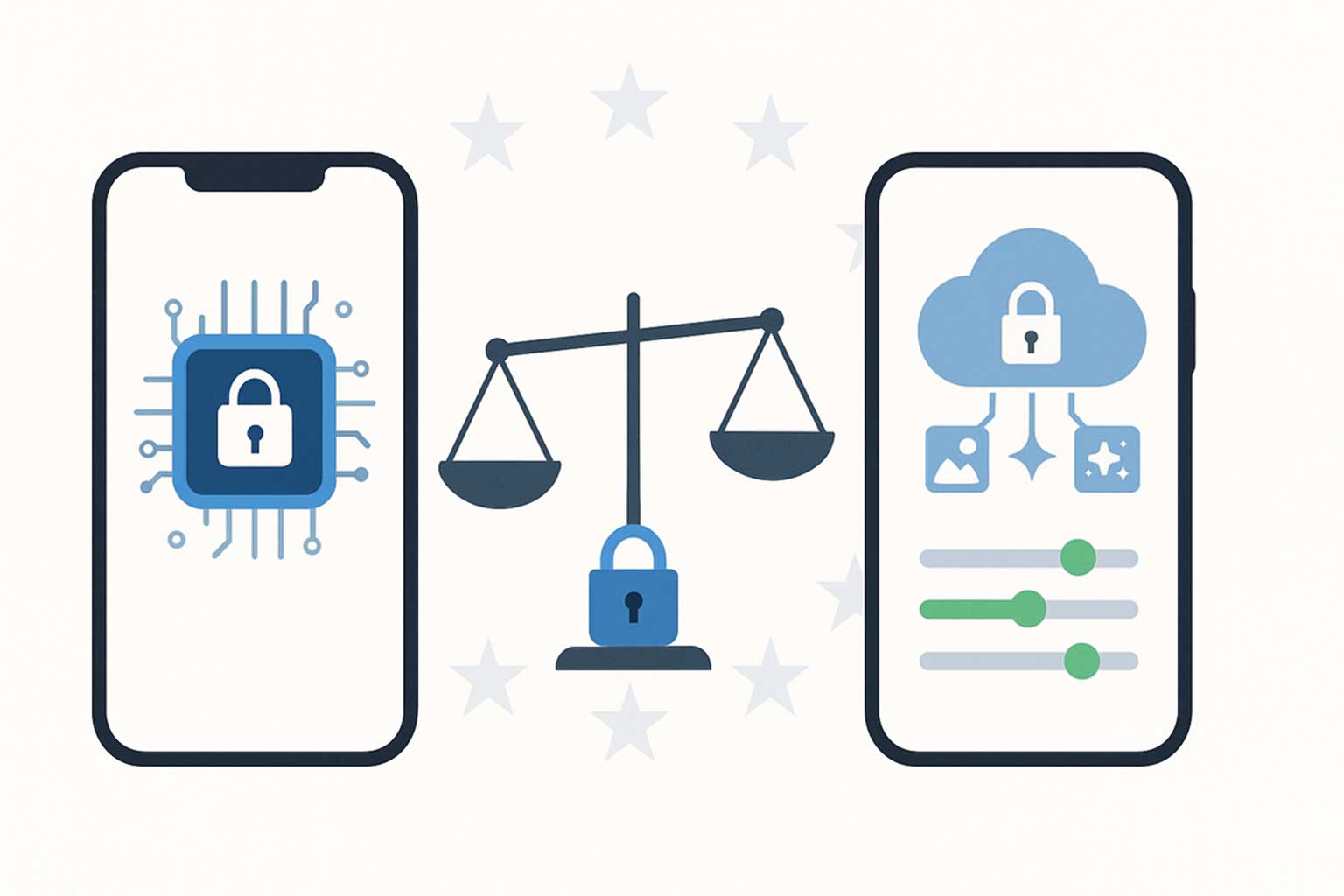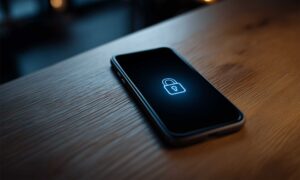Every autumn, new iPhones dominate headlines and temptations. Lots of us ask the same question: should I get an iPhone or go Android — for myself, for a gift, or for work? If privacy matters to you (and it should), this guide gives you a clear, non-technical way to decide — with simple checklists and links to turn settings on right away.
Two different business models
- Google (Android) earns most of its money from advertising, which shapes how data is collected and used across services like Search, YouTube, and Android. In 2024, Alphabet reported $264.6B in advertising revenue out of $350.0B total (~76%).
- Apple (iPhone) earns most of its money from hardware and paid services and positions privacy as a product feature. That doesn’t make Apple “more moral,” but it does mean incentives differ: Apple is motivated to sell devices and services; Google must keep ads effective.
AI is the new privacy battleground
Android: Powerful cloud AI, with controls you should use
Google’s “Gemini” features and photo magic are excellent — and often cloud-based. For private chats with AI, Gemini’s “Temporary chats” store history for up to 72 hours and are not used to train models; you can also delete activity and disable personalization in My Ad Center.
iPhone: More on-device by default, and a private cloud for “heavy” AI
Apple’s Apple Intelligence runs many AI features on your device. When a bigger model is needed, it can use Private Cloud Compute — Apple-controlled servers running Apple silicon — designed so requests aren’t stored and aren’t accessible to Apple. If Apple needs to tap ChatGPT, you’re explicitly asked for permission, your IP is obscured, and requests aren’t retained by OpenAI unless you sign in.
Takeaway: If you like the idea of AI that mostly stays on your phone, Apple’s approach is very privacy-forward. If you want the latest cloud AI tricks from Google, you can still use them — just visit My Ad Center to tighten data use.
Tracking & ads: who can follow you across apps?
- iPhone: App Tracking Transparency (ATT) forces apps to ask before tracking you across apps & sites. You can also disable “Allow Apps to Request to Track” altogether.
- Android: Google’s Privacy Sandbox replaces cross-app identifiers with privacy-preserving APIs (Topics, Attribution Reporting, SDK Runtime). These aim to reduce tracking while keeping ads functional. You can still reduce personalization via My Ad Center.
iPhone gives you a blunt on/off control for cross-app tracking. Android is modernizing ads to be less invasive and gives you user controls — but you should actively use them.
Device security: the boring stuff that keeps you safe
- iPhone: Hardware security (e.g., Secure Enclave) + on-device encryption; Apple’s Platform Security and features like Lockdown Mode for high-risk users.
- Android (best on Pixels/Samsung): Verified Boot, hardware-backed Keystore/StrongBox, and on Pixel phones a Titan M2 security chip. Samsung offers enterprise-grade protections with Knox.
Cloud privacy & data transfers
- Apple’s Advanced Data Protection brings end-to-end encryption to more iCloud categories (including Backups and Photos) if you turn it on. Private Relay helps hide your IP and DNS from networks (iCloud+).
- For Android/Google accounts, transatlantic data transfers rely on the EU-U.S. Data Privacy Framework (DPF). The European Commission adopted an adequacy decision in July 2023, and Google LLC is certified under the DPF.
Quick chooser: which way should you lean?
Pick iPhone if you want…
- Lots of on-device AI, with a privacy-designed Private Cloud Compute safety net.
- A single, strong anti-tracking prompt (ATT) and easy global “don’t track me” setting.
- Optional end-to-end encrypted iCloud backups/photos via Advanced Data Protection.
Pick Android (ideally Pixel or Samsung) if you want…
- The most flexible hardware options at many price points, with 7-year updates on modern Pixels/S24+.
- Work Profile for clean BYOD separation and broad MDM/ecosystem choice.
- Google’s latest AI features, and you’re willing to tune My Ad Center and privacy settings.
10-minute privacy tune-ups
On iPhone
- Block tracking prompts: Settings → Privacy & Security → Tracking → Off for “Allow Apps to Request to Track.”
- Turn on Advanced Data Protection: follow Apple’s guided setup (you’ll add a recovery method).
- Try Private Relay (iCloud+): Settings → [Your name] → iCloud → Private Relay.
- High-risk? Learn Lockdown Mode and Safety Check.
On Android (Google account)
- Ad privacy: go to My Ad Center and turn off personalized ads or limit sensitive topics.
- App permissions: review Location and Photos/Media — prefer “While in use,” and consider “Approximate location.” (Android supports granular location permissions.)
- Play Store > Data safety: skim what apps collect/share before installing.
- Enable updates: choose devices with 7-year support (Pixel/S24+) and keep system + Play system updates on.
Final thought
- If you want privacy-by-default with fewer switches to manage, pick iPhone, enable Advanced Data Protection, and enjoy on-device AI with Private Cloud Compute for heavier tasks.
- If you want choice, great value at many prices, and Google’s newest AI, pick a Pixel or Galaxy S24+, turn personalized ads off (or restrict them), and use Work Profile if it’s for work.







